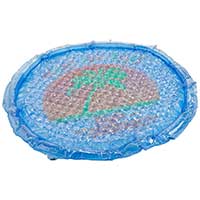This calculator is approximate because it doesn’t account for the many factors that impact heat loss in the swimming pool. The exact time needed to change the pool temperature will vary based on evaporation rate, convection losses, thermal radiation losses and conduction losses (explained more below). One of the easiest ways to reduce heat loss is by using a pool cover; it can reduce convection losses between 15%-25%. Always oversize when purchasing a pool heater. An undersized pool heater takes longer to heat and cost more money to operate.
READ: Unlocking the Secret Behind Pool Heat Pumps: How They Work and Why You Need One
RESULTS SHOWN HERE
More About Pool Heat
Pool Heat Evaporative Losses:
Swimming pool water on the surface is continually transitioning to water vapor. The heat energy used during the transition to water vapor is lost from the body of water reducing the overall temperature. Evaporative losses can account for 50% of swimming pool heat loss.
READ: A Comprehensive Guide to Pool Heaters: Types, Benefits, and Considerations
Convection Losses
Convection losses are similar to evaporative losses in that they are both related to environmental conditions impacting the surface area of the pool. Convection losses occur when air contacts the surface area and heat energy is transferred. This effect is similar to the chill felt on the skin from the breeze when exiting the pool. Convection losses can be responsible for 15%-25% of heat energy loss. These losses can easily be reduced with the use of a pool cover.
Thermal Radiation Losses
Thermal radiation losses occur from direct sunlight, high water temperature or high relative humidity. This kind of thermal radiation is similar to feeling the heat of a campfire on your face from a distance. Thermal radiation losses are responsible for 20%-30% of heat energy loss in the swimming pool.
READ: Harness the Power of Heat Pumps: Energy-Efficient Pool Heating for In-Ground Pools
Solar Sun Rings
Order From Amazon
Conduction Losses
Conduction losses account for the heat energy lost by the friction of the water moving thru the plumbing or the friction of the water rubbing the side of the pool. Conduction loss is the only heat loss that doesn’t occur on the pool surface and only accounts for about 5% of total heat energy loss.


